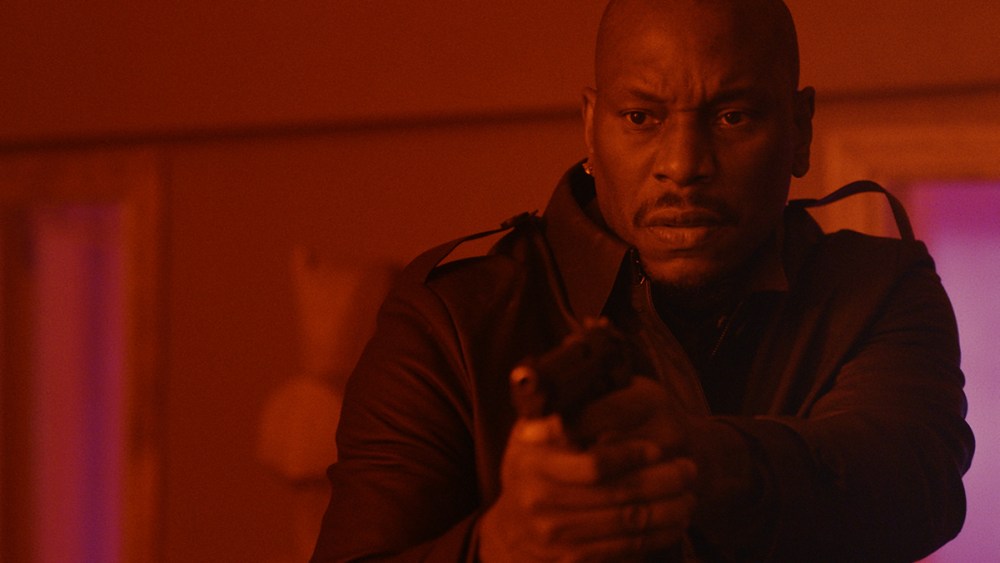“The Wrecker” packs so many action-thriller cliches into its first few minutes — including Harvey Keitel screaming “You don’t mess with a man’s family!” at a bloodied bloke tied to a chair in a warehouse — that you might worry if there will be any left to fill out the remaining 90. Fear not. This latest from actor-stuntman turned prolific B-movie director Art Camacho “introduces” star Niko Foster, though the only truly new element here for either party is that it represents a relatively rare theatrical (rather than direct-to-home-video) release. Seismic is rolling “The Wrecker” out to U.S. venues this Friday, with Quiver Distribution launching to home formats at an unspecified future date.
Himself a veteran producer with several prior onscreen credits, Foster has the requisite bulging biceps, gravel voice and three-day stubble for a stock macho action-figure hero, amidst other 1980s/90s-style genre tropes. But the script he wrote with Sophia Louisa and James Dean Simington is so shamelessly derivative of already-cartoonish precedents (like “Road House” and “Stone Cold”), it might as well have been assembled by AI — or even intended as self-satire, though regretfully that does not appear to be the case.
Also featuring name actors Mena Suvari, Tyrese Gibson and Danny Trejo in thankless roles, this tale of mob-related malfeasance and solo vengeance in Vegas is slick but thoroughly ridick. However, it’s pacy and colorful enough that those in the mood for a deep-fried knuckle sandwich with extra cheese may have fun.
After an awesomely hokey prologue that deprives Det. Boswell (Gibson) of his partner at the hands of ruthless “Dante the Untouchable” (Keitel), the film introduces protagonist Tony Minetti (Foster). He’s an ex-Marine who got dishonorably discharged. Now he runs an auto-repair shop while raising daughters Sarah (Rebekah Samuel) and Sunshine (London Dee Falcon), whose mother is deceased. Vrooming into the garage one day is his bad-boy little bro Bobby (Chad Michael Collins), high as a kite, driving a canary-yellow Ferrari he surely didn’t acquire through legal means. Unwisely agreeing to go for a spin, Tony finds they’re soon tailed by an ominous black SUV.
When the inevitable chase ends in an inevitable crash, he wakes up facing the smirking, fedora’d “biggest crime boss since Al Capone,” whose vehicle Bobby had stolen. Dante informs Tony he won’t see his ne’er-do-well sibling again until he’s paid off that debt by performing some “jobs.” These involve raiding the lairs of hoodlum rivals, then singlehandedly dissuading them from competition. Tony refuses to handle guns (a third brother died in childhood playing with one), so he accomplishes these forceful cleanups with nothing more than his fists — plus one big, swinging wrench.
Such crackdowns attract notice from Boswell, who detects a civilian ally in his fight against local syndicates. But Tony eludes the cop’s inquiries, protected by his waitressing quasi-girlfriend (Suvari, stuck in doe-eyed “honey, be careful” terrain), coworkers and other loyal pals. The two men do eventually join forces, however, once Dante’s goons cross an unforgivable line.
“The Wrecker” is lively enough, albeit without much distinction to its action, let alone plotting. It seems entirely recycled from whole parts of other movies. Nothing is too obvious for inclusion: The scantily clad women who provide background scenery in “lair-invading” scenes, yet never get a line of dialogue; the frequently ludicrous ease with which good guys defeat bad ones (at one point Trejo conquers a hulking tough by swiveling an office chair); moldy-chestnut dialogue like “He’s one man against an army” or the inescapable “Let’s do this!!”
Knee-jerk sentimentality is cued by any mention of “family,” and there’s a howler of a sappy twist at the close. We get a training montage and an armoring montage, scored to generic hard rock, naturally. The title is derived from possibly the single silliest development among many: When Tony decides to “go to war,” his garage buddies reveal hitherto hidden skills to convert a truck into a “Mad Max”-worthy bulletproof tank, complete with flamethrower… virtually overnight, to boot.
This is not a finest hour for any of the better-known actors in the cast, though it must be said that, unlike in many a similar joint, they aren’t limited to glorified cameos. But the character writing is still so vapid that there’s not much they can do. The lesser-knowns, who often appear recruited from the ranks of pro wrestling and so forth, provide some awkward thesping moments. Still, they’re seldom required to provide more than sneering physicality. Foster himself is carefully presented in all the customary ways for this kind of quiet-cool, deadly-when-riled hero. (Does Tony even own a shirt with sleeves?) If there’s any personality, charm or humor to go with that rugged surface, however, those qualities remain MIA here.
Though it might’ve taken advantage of the Las Vegas setting more, “The Wrecker” has an attractive-enough look in Stefan Colson’s widescreen cinematography. Some of the visual and editorial gimmicks feel a bit desperate in trying to lend third-hand ideas a patina of fresh excitement, but the film’s tech and design factors are solid for its relatively modest scale.
Increasingly towards the end, stylistic and narrative conventions get taken so far over-the-top that you do begin to wonder if Camacho & co. might be pulling our leg. Yet the only element reinforcing that notion is Mauricio Trabanino’s original score, which goes from standard bombast to underlining every pow! and thwack! a la the 1960s “Batman” series. Even so, one suspects that he’s having a private joke the other filmmakers aren’t in on.

